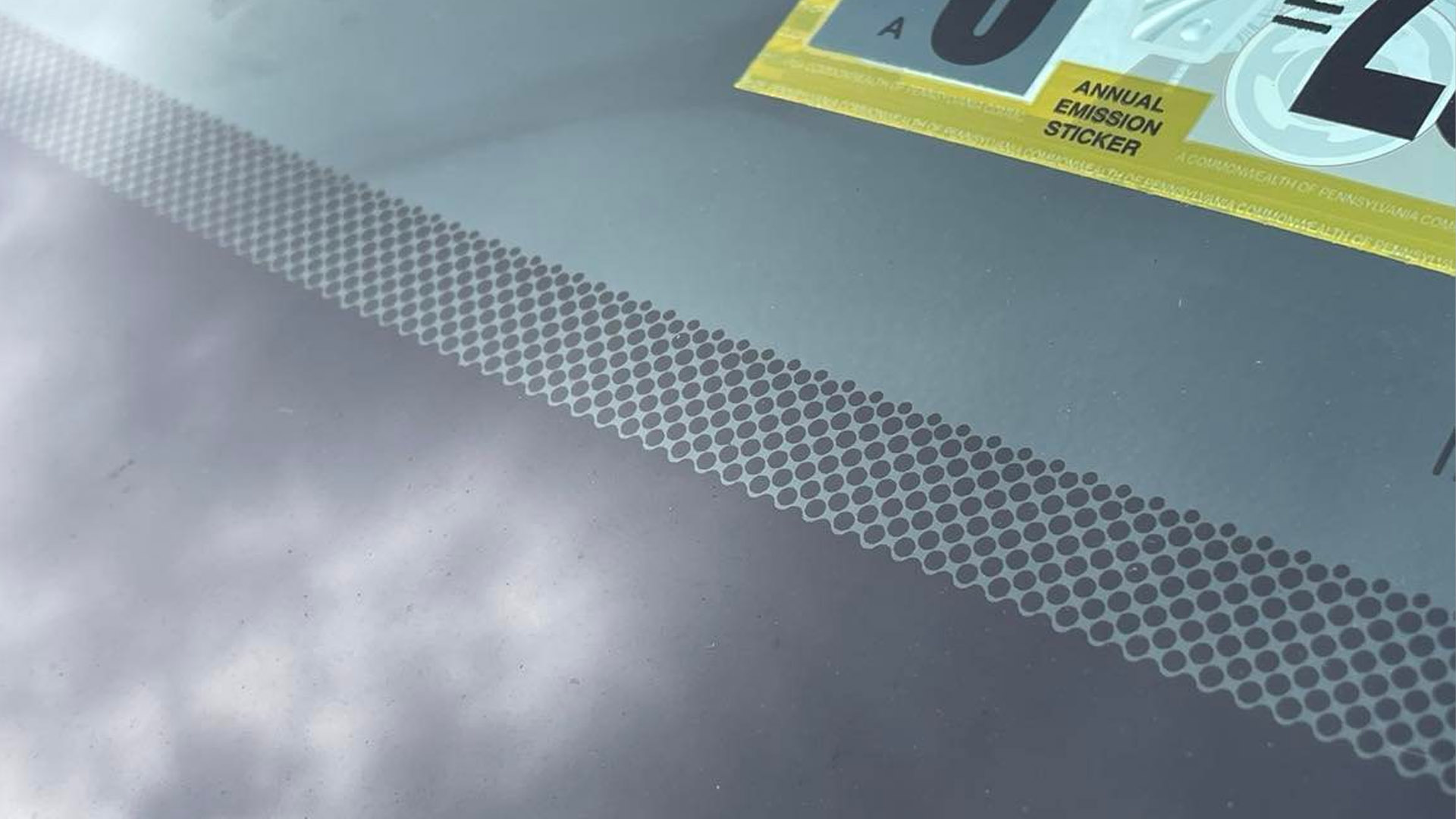

We may earn revenue from the products available on this page and participate in affiliate programs. Learn more ›
Every day you hop in your car, you find yourself surrounded by metal, assorted plastics, and glass. Occasionally, you might find yourself admiring the craftsmanship in a particular part, or maybe trying to figure out how you managed to scratch that one trim piece you can’t remember ever touching. One thing I often find myself staring at are those small black dots around the edges of my windshield; why does seemingly every single car happen to have a similar pattern?
Well, as it turns out, those small dots aren’t for decoration. In fact, they serve quite a few important purposes that you might not think about, from simple aesthetics down to temperature regulation during the manufacturing process.

Essentially, the frit is an enamel-based coating that is silkscreen printed onto the windshield and then baked on to form a bond. This area then serves as a secure contact point for urethane adhesives used to mate the glass to the windshield frame.
The frit is also essential to the manufacturing process of the windshield. When a windshield is manufactured, it is first cut to shape before the frit is printed on. At this point, the glass is still flat and needs to be molded to shape, so it is heated before being placed on a bending jig. The frit will typically heat up faster and to a more intense temperature than the uncoated glass, which is where the dots, technically called a half-tone pattern, come into play. These dots will ultimately help to better disperse the heat more evenly from the frit to the uncoated glass.
Once the windshield is actually ready to be mated to the car, the frit comes into play yet again. But it’s not just a bonding surface like we mentioned earlier, it’s also a way for the automaker to simply hide the adhesives from plain view, because—and let’s face it—there’s no way that squished glue is pretty enough to show off like a proper body line or Hofmeister kink.

So the next time you find yourself staring at those half-tone dots in your driveway, remember all that goes into making your windshield. From the bending process, all the way to hiding ugly adhesives, more is involved with that small black frit than you may have thought about before.
Got a tip or question for the author? Contact them directly: rob@thedrive.com